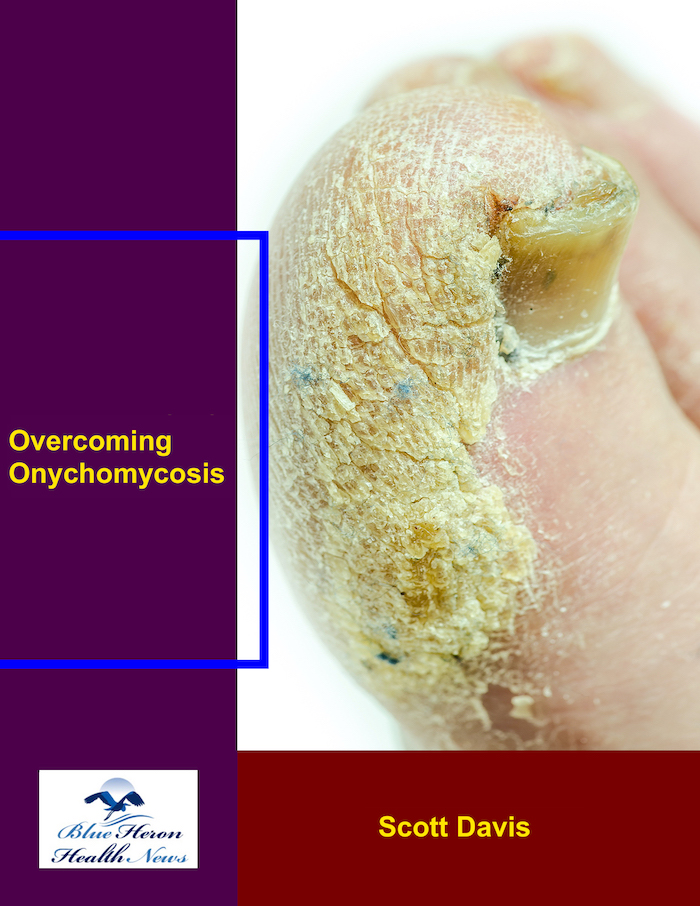
Overcoming Onychomycosis™ By Scott Davis If you want a natural and proven solution for onychomycosis, you should not look beyond Overcoming Onychomycosis. It is easy to follow and safe as well. You will not have to take drugs and chemicals. Yes, you will have to choose healthy foods to treat your nail fungus. You can notice the difference within a few days. Gradually, your nails will look and feel different. Also, you will not experience the same condition again!
What are the risk factors for developing onychomycosis?
Onychomycosis, a fungal infection of the nails, is influenced by several risk factors that can increase an individual’s likelihood of developing the condition. Here are some key risk factors for onychomycosis, supported by multiple sources:
1. Age
- Increased Age: Onychomycosis is more common in older adults. Aging is associated with slower nail growth, reduced immunity, and increased exposure to fungal elements over time. Studies show that the prevalence can be as high as 20-30% in individuals over the age of 60 (AAFP).
2. Underlying Health Conditions
- Diabetes: Diabetic patients are at a higher risk due to compromised blood circulation, peripheral neuropathy, and a weakened immune system. The prevalence of onychomycosis in diabetic patients can be significantly higher than in the general population (AAFP).
- Immunosuppression: Conditions like HIV/AIDS, chemotherapy, and use of immunosuppressive drugs can increase susceptibility to fungal infections, including onychomycosis (AAFP).
- Peripheral Vascular Disease: Reduced blood flow to the extremities can impair the body’s ability to fight infections, making the nails more susceptible to fungal invasion (AAFP).
3. Environmental and Lifestyle Factors
- Moist Environments: Frequent exposure to moist and warm environments, such as communal showers, swimming pools, and locker rooms, can increase the risk of fungal infections. Fungi thrive in these conditions and can easily be transmitted through contact (AAFP).
- Footwear Choices: Wearing tight-fitting or non-breathable shoes can create a moist environment that encourages fungal growth. This is particularly a concern for individuals who wear such footwear for extended periods, such as athletes (AAFP).
4. Nail Trauma
- Injury to Nails: Trauma to the nail, such as from sports injuries, tight footwear, or improper nail trimming, can create entry points for fungi. Repeated trauma or pressure can weaken the nail, making it more susceptible to infection (AAFP).
5. Genetic Factors
- Family History: There is evidence suggesting a genetic predisposition to onychomycosis. Individuals with a family history of the condition may have a higher likelihood of developing it themselves (AAFP).
6. Gender
- Gender Differences: Some studies suggest that men are slightly more likely to develop onychomycosis than women. This may be due to differences in occupational exposures, nail care practices, and footwear choices (AAFP).
7. Other Risk Factors
- Smoking: Smoking has been linked to an increased risk of fungal nail infections, possibly due to its effects on circulation and immune function (AAFP).
- Psoriasis: Patients with psoriasis are more prone to developing onychomycosis, likely due to the compromised integrity of the nails and surrounding skin (AAFP).
These factors can interact and compound the risk, making it important for individuals, especially those with multiple risk factors, to take preventive measures and seek early treatment if symptoms of onychomycosis appear.
For more detailed information, you can refer to sources like Mayo Clinic and American Academy of Dermatology.
Can onychomycosis spread from one nail to another?
Yes, onychomycosis can spread from one nail to another. This spread can occur through direct contact or indirectly via contaminated surfaces or tools. Here are the key ways this transmission can happen:
1. Direct Contact
- Adjacent Nails: The fungal infection can easily spread from an infected nail to neighboring nails on the same hand or foot. This is more likely when multiple nails are in close contact, such as when wearing tight footwear that compresses the toes.
- Self-Transfer: Individuals may inadvertently transfer the fungus from one nail to another through activities like scratching or touching the nails.
2. Indirect Contact
- Shared Tools: Using the same nail clippers, files, or other grooming tools on both infected and healthy nails can spread the fungus. It is crucial to sterilize these tools after use or use separate sets for infected and non-infected nails.
- Contaminated Surfaces: Fungi can survive on surfaces like floors, shower mats, and communal areas. Walking barefoot in communal areas such as gyms, locker rooms, or swimming pools can increase the risk of spreading the infection to other nails or individuals.
3. Environmental Factors
- Moisture and Warmth: Fungi thrive in warm and moist environments. Prolonged exposure to such conditions can facilitate the spread of the infection within the nails. For example, wearing non-breathable shoes that trap moisture can create an ideal environment for fungal growth and transmission.
4. Hygiene Practices
- Poor Hygiene: Not washing hands or feet properly, especially after touching infected nails, can spread the infection to other nails or body parts. This is particularly a concern for individuals with compromised immune systems.
Prevention Strategies
- Good Nail Hygiene: Keeping nails trimmed and clean can help prevent the spread of the infection.
- Avoiding Shared Items: Not sharing personal items like towels, shoes, and nail care tools can reduce the risk of spreading onychomycosis.
- Using Antifungal Treatments: Early and appropriate treatment of onychomycosis can prevent the infection from spreading to other nails or individuals.
For more detailed information, you can refer to resources like Mayo Clinic and American Academy of Dermatology.
Overcoming Onychomycosis™ By Scott Davis If you want a natural and proven solution for onychomycosis, you should not look beyond Overcoming Onychomycosis. It is easy to follow and safe as well. You will not have to take drugs and chemicals. Yes, you will have to choose healthy foods to treat your nail fungus. You can notice the difference within a few days. Gradually, your nails will look and feel different. Also, you will not experience the same condition again!